Customer Experience
Customer Onboarding: Step By Step Guide, Best Practices & Examples
Article written by Mathew Maniyamkott
Regular contributor to various magazines. Passionate about entrepreneurship, startups, marketing, and productivity.
19 min read
19 September 2025

We’ve all heard the saying, “First impressions last.” In the world of HR, customer onboarding isn’t just a process—it’s that crucial first impression. Imagine a new user’s excitement after purchasing your product, eager to dive in and experience its full potential. But what if, instead of smooth sailing, they encounter a maze of confusion, delays, and unanswered questions? The thrill evaporates, replaced by frustration.
Now, let’s paint a different picture.
Your customer onboarding experience is seamless, intuitive, and enriching. New users feel valued, understood, and, most importantly, empowered to use your product effectively from the get-go. Not only do they stick around, but they become advocates for your brand, sharing their positive experiences with peers.
That’s the power of an impeccable customer onboarding process. Getting onboarding right can be a game-changer, especially in HR, where human connection and understanding are paramount. So, how do you ensure this? Dive into our step-by-step guide, and let’s transform those first-time user jitters into long-term user joy.
What is customer onboarding?
Customer onboarding is the process where your new customers are nurtured into getting familiar with your product. A superb customer onboarding experience can bring a positive experience to the customer. It should be filled with tutorials that will help the customer walk through the product with ease, guidance, chat call support, etc.
You have created a fantastic product that your customers love, so they have opened their purse strings to purchase it from you. Realize that they have trusted your sales copy and believe it will work according to their expectations. It is your duty to ensure that they get the best bang for their buck by providing that they can use your product to the fullest.
Why is customer onboarding important?
When you onboard a new customer, you are on the verge of forging a relationship with them. If you can do it right, then not only are you delighting one customer, you are also opening your business to potential word-of-mouth marketing and an increase in the Customer Lifetime Value. There have been innumerable reports on how keeping an existing customer is much cheaper than getting a new one. Having a proper customer onboarding process is also pivotal to achieving a higher customer retention plan.
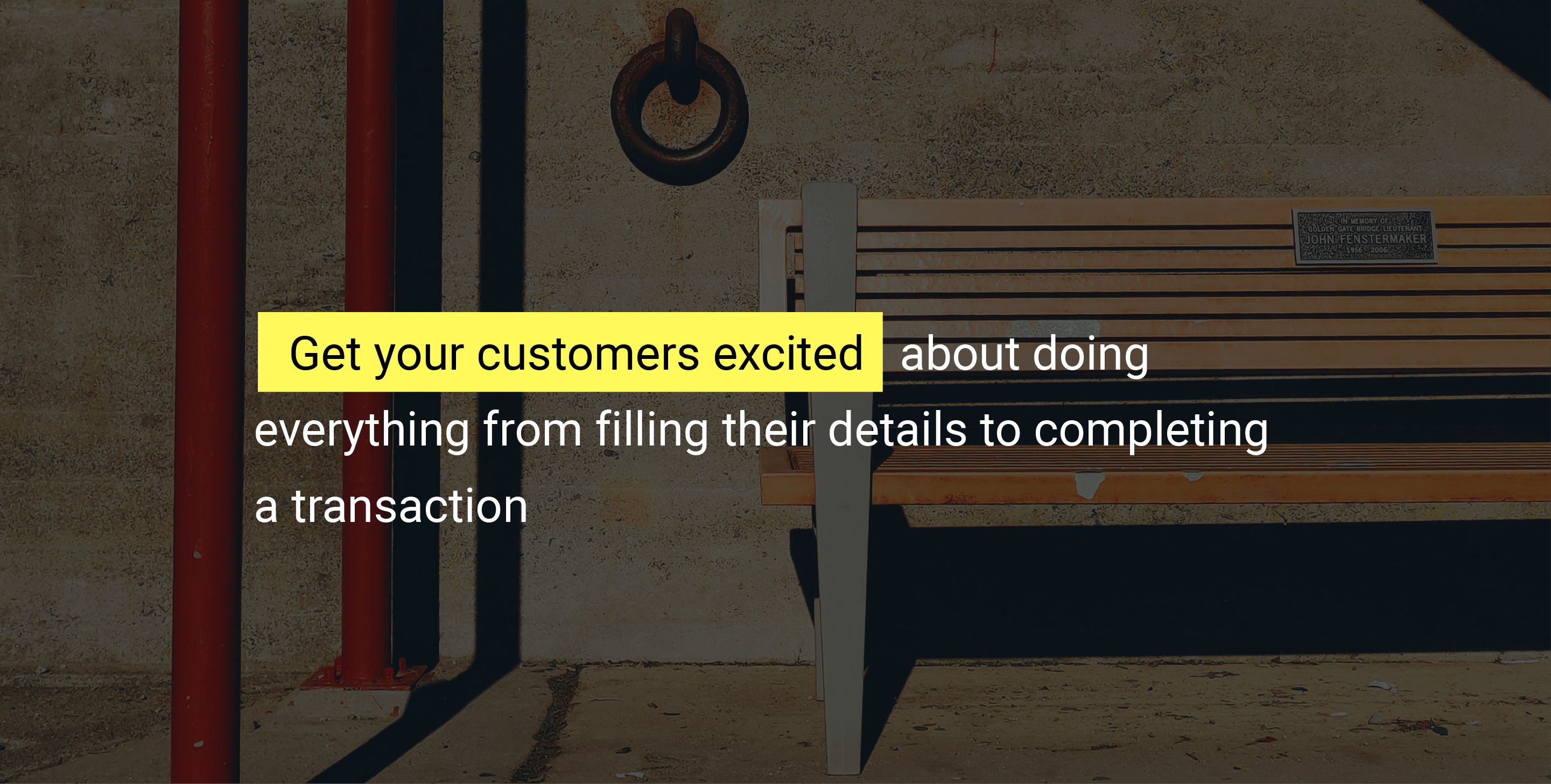
Onboarding customers: Best practices
The success of any business lies in how effectively it can bring onboard new customers and ensure their smooth transition. A refined customer onboarding strategy is indispensable. Here are some best practices to ensure optimal client onboarding:
#1 Understand Customer Needs: Before starting the onboarding process, it’s vital to understand your customer’s unique needs, challenges, and expectations.
#2 Clear Communication: Always communicate the value your product or service offers. Be transparent and concise in explaining how it addresses the customer’s needs.
#3 Easy and Intuitive Process: Simplify the onboarding process. Avoid unnecessary jargon and keep the steps straightforward to avoid overwhelming your clients.
Make use of customer onboarding surveys
#4 Training and Support: Offer training sessions or tutorials for your product or service. Always ensure that customer support is easily accessible.
#5 Feedback Loop: After the onboarding process, solicit feedback. It can provide insights to refine your customer onboarding strategy.
#6 Set Clear Milestones: Break down the onboarding journey into tangible milestones. This gives customers a sense of progress and accomplishment.
#7 Personalization: Remember, every customer is unique. Tailor your onboarding process to cater to individual needs.
#8 Monitor and Iterate: Keep track of how customers are navigating the onboarding process. Use this data to refine and improve continuously.
#9 Stay Engaged: Regularly check in with your customers even after the onboarding is complete. This helps in building a strong, lasting relationship.
#10 Utilize Technology: Implement tools and software designed for customer onboarding. They can automate, streamline, and enhance the experience.
Incorporating these practices will ensure a robust and effective customer onboarding strategy, leading to satisfied, loyal clients and growth for your business. Remember, the onboarding journey doesn’t end once the client is onboard; it’s an ongoing process of support, engagement, and relationship-building.
Check Here: Customer onboarding template
The Comprehensive Checklist: 20 Steps to Perfect Customer Onboarding
#1 Email as a tool
Send your customers a series of emails that will tell them the steps that they need to follow to start using your product. Emails are a great way to tell your customers about the benefits and features of your product. In fact, the first contact after a customer purchases is a ‘Welcome email.’ Research has said that welcome emails have a 4x open rate when compared with other emails. Use the welcome email to educate the customer more about your product.
You can also use emails to educate your customers about the different parts of your product. In fact, all of this information doesn’t have to come in a single day. You can send your customers emails in the form of drips so that they don’t get a burnout by the amount of information they receive.
#2 Video as an onboarding tool
One of the greatest advantages of videos is that it will never be dull. Even if you try to make it dull, there is some sort of liveliness which is inherent to the platform. With videos, you can use attention-grabbing visuals to say something important to your user. Do you know that people like watching videos especially when they want to learn something about a product? They would rather watch it on video than read articles. Video creates more excitement among your users.
#3 Show value
Before your customer starts using your product, get them to know the benefits associated with using your product so that they will be more enthused to try it out. Tell them how each of their pain points will be solved by your company. The more specific you say this, the higher are the chances for them to have a happy onboarding experience. Create a document that is specific to their expectations about your product. Re-emphasize the benefits of your product and the benefits that your customer gets from it. Concentrate only on that part and you are good to go.
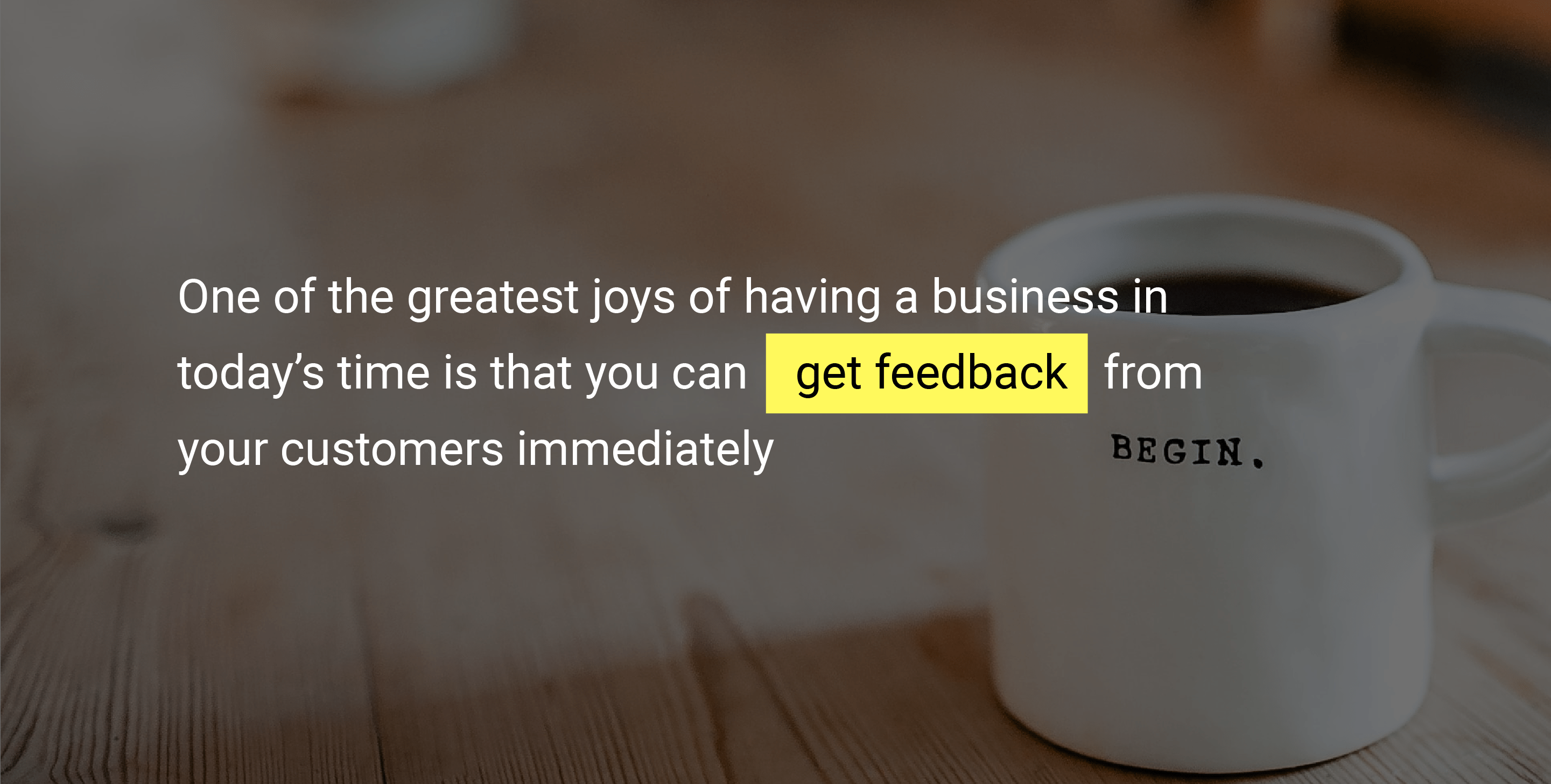
#4 Avoid overloading of information
If you provide them too much information, which makes them, then you are at fault, too. You should not give your customers reading material that will take them a day to complete. You should cut down on this reading material by keeping it as concise as possible. Do not put up content that goes too much into the details. The customer doesn’t care about it. All they want to know is how it is going to help them. We would not discourage you from taking great care in preparing documents for your customer’s understanding, but ensure that there is no fluff in it and doesn’t take up too much time of the customer.
#5 Product walkthrough
Your customer would surely know what your product does but will be unfamiliar regarding the finer details of it. This is an important step of the customer onboarding process because the entire point of it is to reduce as much friction as possible when onboarding a customer.
Here is what you can do:
- Get on a call with the customer where you can walk them through the product.
- Create a series of videos where you help them understand the benefits of your product with a voiceover
- Video product tour
- Create a training module which your customers can learn from every time they want to do something specific
#6 Make them use your product
As simple as this might seem, it has a huge influence on the psyche of your customers. Most apps that people download these days are left unused because they did not take any action on it or felt compelled to do so. Once someone starts using it, they will be comfortable doing it again. Making a customer take the first step is where everything lies.
An effective onboarding process aims to make the user undergo the first transaction as soon as possible. The more time it takes, the higher the chances of people dropping off.
#7 Always be available
One thing that will impress the pants off your customers is if you are available to your customers at all times. When customers are going through your product during the onboarding process, ensure that someone from the customer success department is available for them. This will not only make the onboarding process easy, but it will also be memorable for the customer. They will keep it in mind for a long time, it will even increase the loyalty of your customers as they see that you have their best interests in mind.
#8 Create a knowledge base
Ensure that when a customer is about to be onboarded, there is already a bunch of knowledge base available for their perusal. The knowledge base you create should be in such simplified language that anyone can understand within the first reading. Having a resource section is ideal for your customers as they can not only go through frequently asked questions, they can also be a part of forums where customers are actively participating. Another thing that is a great tool that can be used as a part of your knowledge base is Chatbots. When a customer interacts with a chatbot, they will feel as if they are a part of the conversation. It is also personalized to a point where the customer feels as if it is a real person on the other side.
#9 Celebrate little victories
Each time your customer finishes doing something on your website or app, celebrate it. Get them excited about filling in their details to completing a transaction. Once they are familiar with your product, your goal should be to make them use your product over and over again. When the customer feels as if you are invested in their success with the product, they will also go above and beyond what you expect from them.
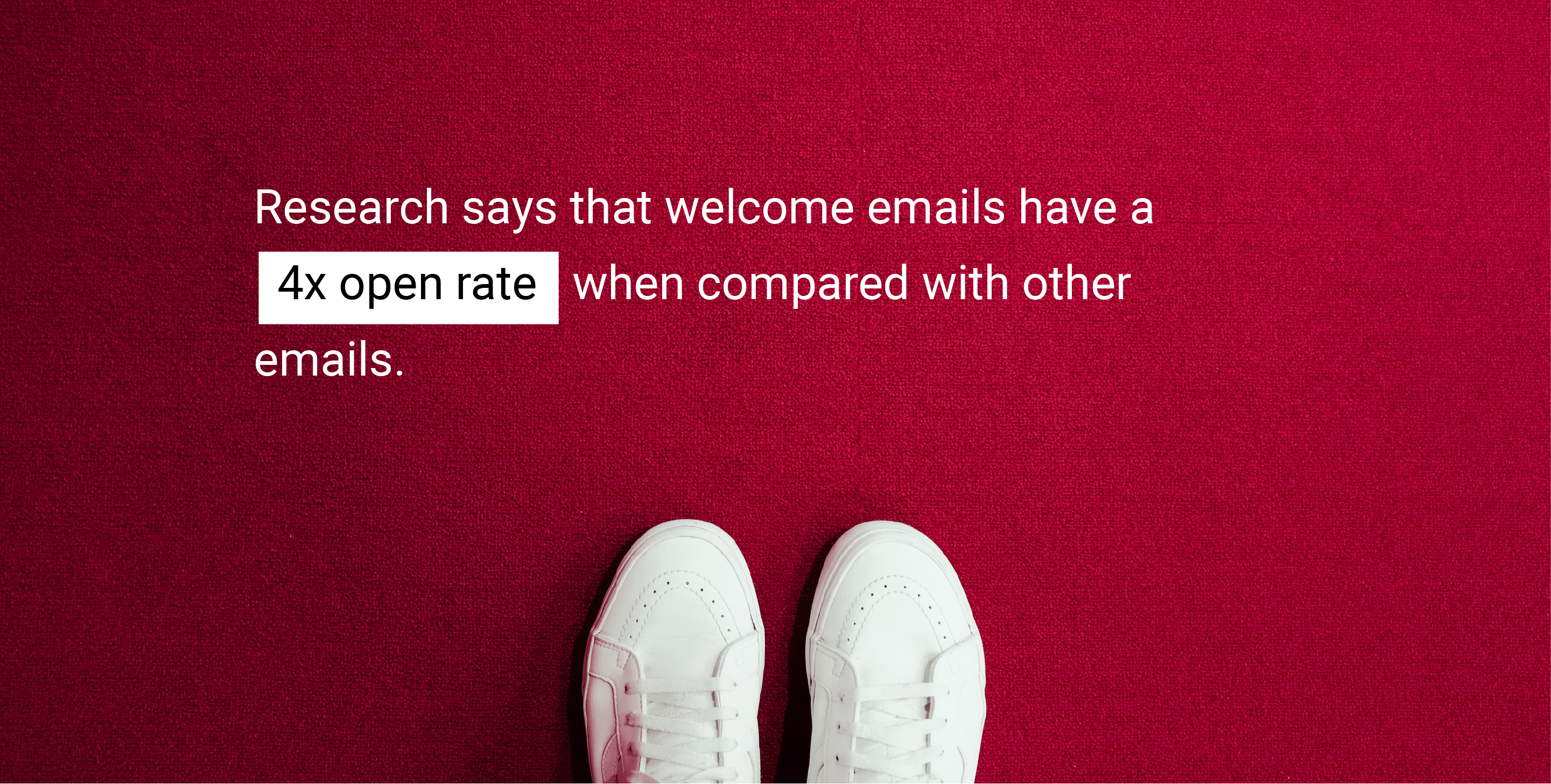
#10 Talk to your customers
While automation is one of the best things that could have happened to businesses around the world, there is no denying the fact that customer interaction with a real agent will always be pivotal to business communication. Your customers need personal care, it is something that the smartest AI in the world has not been able to deliver, at least not as of writing this article.
When customers make payments to buy software, they would like to speak to someone who will help them utilize the product as much as possible. There is only so much that software can achieve. When you talk to your customers, you will be able to understand their problems better, increase your retention rate, and reduce churn once you utilize the insights that you get from conversations with customers.
#11 Have specific onboarding KPIs
We would recommend having KPIs specifically for onboarding customers so that you can see if you are improving on it or not. Write down the various metrics that you can use during the customer onboarding process. For example, you can measure areas during the customer onboarding process like how easy the process is, how fast the customer gets to know the steps to follow, the effectiveness of the survey, etc. Even engagement can be measured as a KPI. Understanding the goals of the customer will help you when you want to measure KPIs during the customer onboarding process.
#12 Use different types of content
If you want your customer onboarding process to be a total success, then you need to diversify the kind of content that you post for your customers. You need to think about limits, strategy, and what will work best. While having a video tutorial is fine, there are a few customers who would like to have textual help so that they can get it done instead of watching an entire video. Even audio content is not far as there are a lot of people who are auditory.
#13 Keep collecting feedback
One of the greatest joys of having a business in today’s time is that you can get feedback from your customers immediately. It is as simple as using a tool like SurveySparrow to ask questions to your customers. Using this feedback form, you will be able to get insights from your customers about what they think of your product. It will also help you understand the problem areas that affect your business and how you could improve it. Collect as much feedback as possible about the onboarding process. Use analytics to track, measure, and to keep getting better.
#14 Create a relationship with your customers
It isn’t easy to make your customers trust you, but it isn’t difficult either. You have to be the one who should be trusting. Develop this by being transparent about everything that you do. If you need loyal fans, not only should you create something that people love, but also be someone who is appreciated by people. You can always win the hearts of your customers with money-fuelled advertisements, but you can also build a brand that people love by showing them that you care in the first place. If you can take your onboarding process to a whole new level, you will be able to create an open, honest, and respectful relationship with your customers.
#15 Double-check your onboarding process
It is normal for businesses to slack on following the basics. When you are creating a new process, ensure that you check if the entire thing works without any trouble. Make sure that all stakeholders go through the onboarding process. Everyone should check for any technical hiccups, check copy, check button placements, formatting, quality, and so on.
Once you are done checking the initial part, ensure you test the program with the help of other employees. Use people from different departments so that you can get various perspectives. It is also advised to have beta-testers, experts, old customers, and so on to be a part of this process. If something goes wrong during the customer onboarding process, it reflects badly on the business. You do not want to look like a wimp, especially when you are telling your customers what to do with your product.
#16 Personalize the experience:
The first thing that you need to do is to ensure that the customer has a personalized experience when interacting with you. It should not be a one-size-fits-all all presentation or document that you give them. It should be directed specifically for them so that they are extensively benefited by it. Use marketing automation technology to get more information about the users so that you can create an ultra-personalized onboarding experience.
#17 Make it unique to their pain points
Here is what you can do to improve the experience for your customers. There are a few of them who have extremely specific goals for buying your product. They don’t have to spend a lot of time on the onboarding process if you can make it specific to their needs. Give them enough instructions so that they follow what is most necessary to meet their needs.
Remember that your customers don’t have a lot of time going through your long-drawn onboarding process. Keep it as simple and succinct as possible. Do not be that company that takes up a lot of time for the demo itself. Everyone hates that kind of company.
#18 Make your customer take actions
While going through the onboarding process, ensure that your customers try out any of the features or click on something. You need to ensure that they are using the app during the onboarding process itself. In fact, give incentives to your customers for taking action. The incentive could be in the form of extra discount, free consultation, training, and so on. By this action, not only would you have made them use your product, you will be able to understand their motivations for using your product based on the incentives they choose.
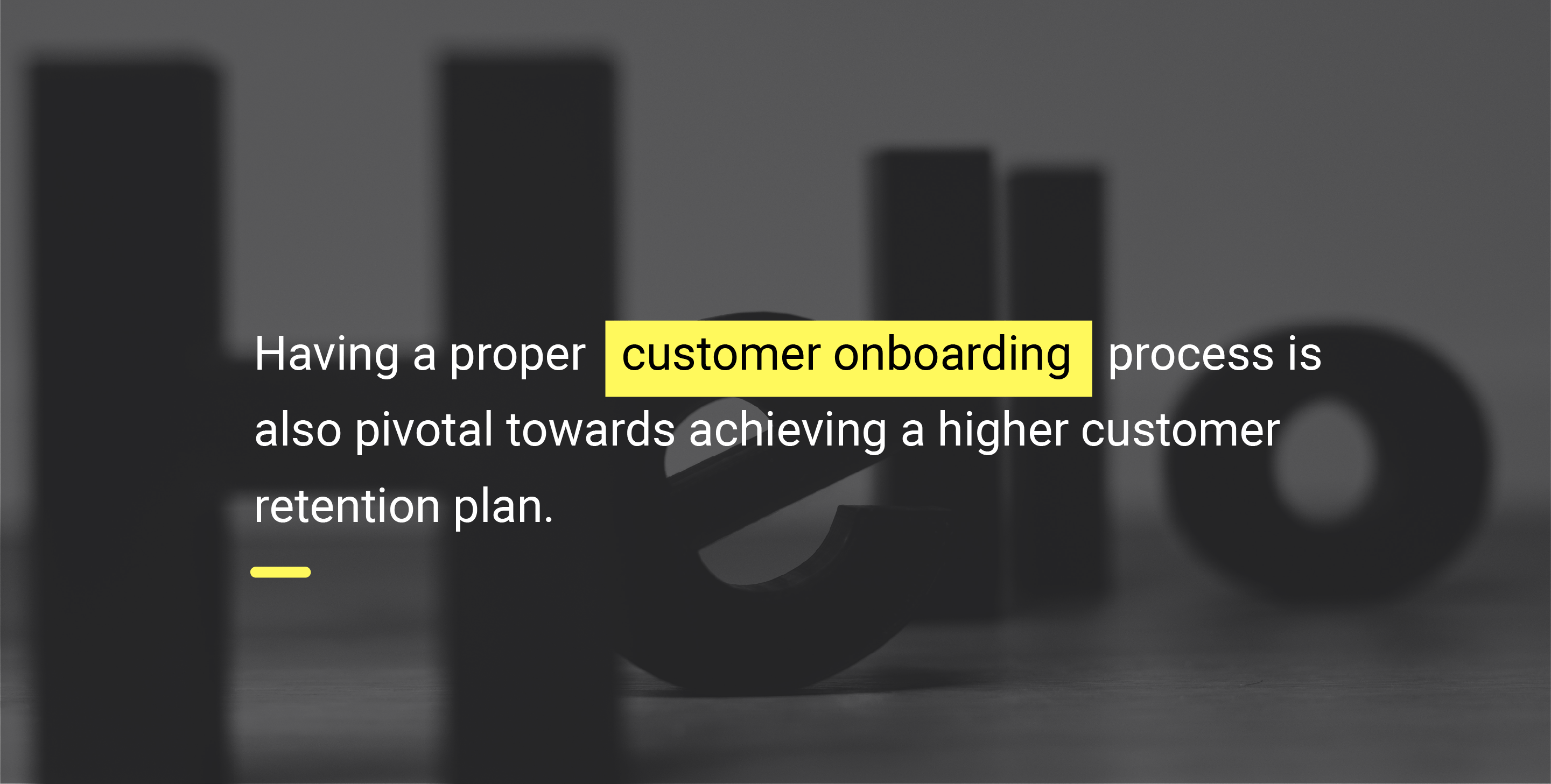
#19 Please and Impress
If there is one thing that you should know as a business, at no point should you try to stop pleasing your customers. They are always on the lookout for something new, and you always need to give them a positive experience. They were looking for something spectacular when they signed up for your product. Create an experience where your customers will keep raving about what you bring to the table.
#20 End with a CTA
When the onboarding process is over, you must give your customers the opportunity to reach out to you, either immediately or later, with the help of a Call to Action button. You can use this occasion to know if they have gone through the customer onboarding process in its entirety. You need to know if they benefited from it. If not, you need to find out the problem areas. At this juncture, you need to give personal attention because your process didn’t work. While helping them onboard organically, you also need to ask what went wrong during the onboarding process and why it didn’t work for them.
Common Mistakes in Client Onboarding and How to Sidestep Them
When introducing new clients to your product or service, even small missteps can result in a less-than-stellar onboarding experience. Here are some common blunders and tips to avoid them:
Understand Your Audience: Tailor the onboarding experience by understanding customer needs and expectations.
Set Goals: Define clear objectives, from reducing support tickets to improving retention.
Simplify the Process: Make the onboarding process intuitive, avoiding unnecessary jargon or steps.
Implement Personalization: Recognize that one size doesn’t fit all in client onboarding strategy. Adapt to individual user preferences.
Educate the Audience: Provide easy-to-access resources like tutorials and FAQs to assist users.
Seek Feedback: Continuously refine your strategy based on user feedback.
Measure and Analyze: Use analytics tools to measure onboarding success, monitoring metrics like user activation and churn rate.
Stay Updated: Regularly refresh your approach to align with evolving user expectations.
Leverage Technology: Leverage onboarding software and tools for automation and insights.
Engage: Beyond the initial process, keep customers engaged with timely updates and tips.
With these steps, businesses can efficiently guide customers, ensuring a smooth and memorable onboarding experience.
Optimize Your Customer Onboarding for Immediate Results. Sign up and enjoy the goodness with SurveySparrow
signup_component]
Customer Onboarding Process: Best Examples
Customer onboarding is the process of guiding new clients or users to easily and efficiently find value in a product or service. When executed well, it fosters client satisfaction, reduces churn, and enhances loyalty. Here are some of the best examples from diverse industries:
- Dropbox: This cloud storage platform offers a user-friendly interface with a step-by-step tour for new users. It highlights key features like uploading files, sharing folders, and installing the desktop version, ensuring users quickly grasp the platform’s full utility.
- Duolingo: The language learning app begins by asking users about their learning goals, language preferences, and daily commitment level. This personalized approach ensures that users are immediately engaged and motivated.
- MailChimp: Known for its email marketing services, MailChimp’s onboarding process includes interactive guides, tooltips, and videos that walk users through list creation, campaign initiation, and report analysis.
- Shopify: For aspiring online retailers, Shopify provides a detailed yet straightforward setup guide. From choosing a design to adding products and setting up payment methods, users are seamlessly led through the entire process.
- Slack: This team collaboration tool introduces its platform through a fun, interactive tutorial. New users are guided through creating channels, sending messages, and integrating other apps.
- Canva: With its drag-and-drop design platform, Canva’s onboarding process is interactive and tutorial-driven. Users are encouraged to create their first design while being introduced to various tools and features.
- Airbnb: For those listing their property, Airbnb offers a step-by-step guide, from setting up a profile to pricing their space. Helpful tips ensure hosts create attractive listings, increasing the likelihood of bookings.
sign up here to make your customer onboarding process easier
14-day free trial • Cancel Anytime • No Credit Card Required • No Strings Attached
Final Thoughts
All businesses know that the sooner the customer identifies the benefit of a product by taking some action, only then will they know if they made the right choice or not. Otherwise, they will go through a flurry of emotions which will mainly be on the negative side. The customer onboarding process is to ensure that your customers are able to understand the implications of using your product and how it would affect their business. Your customers are more likely to use your product if they happen to get benefit from it.
If you are unfamiliar with creating a customer onboarding process, the above 20 pointers will help you draft a solid one. The above tips can be used by any type of company looking to increase the retention rate and reduce churn by having a solid customer onboarding process in place.

Make your customers feel heard. Turn feedback into loyalty with SurveySparrow's CX platform.
Mathew Maniyamkott
Guest Blogger at SurveySparrow
Related Articles
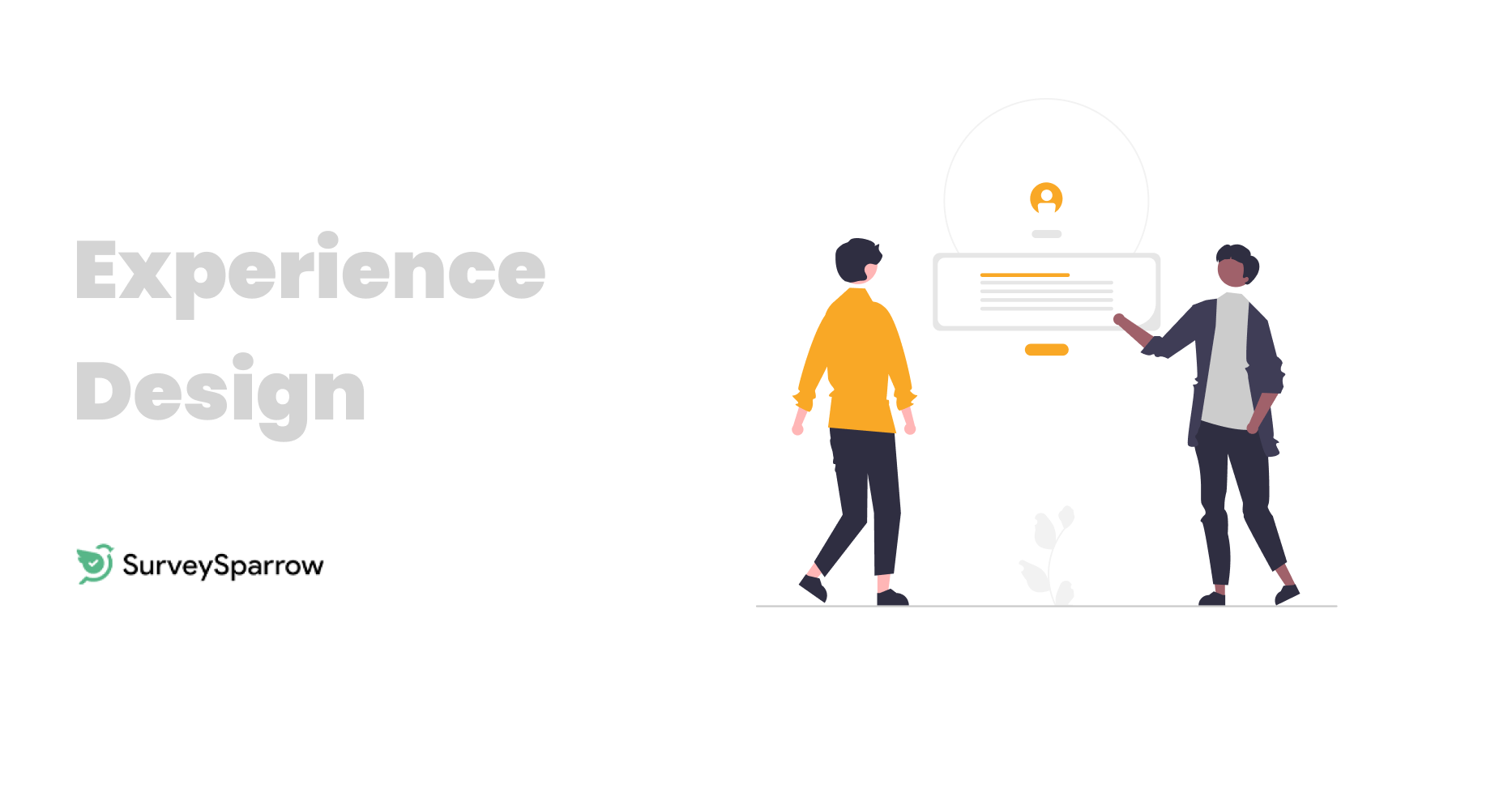
Customer Experience
Experience Design 101: A Guide to Enhancing User Experience in 2025
17 MINUTES
5 July 2022

Customer Experience
7 Reasons to Invest in Customer Experience in 2024 (CX)
10 MINUTES
4 July 2018

Customer Experience
5 Customer Retention Strategies & Examples from the World’s Best Brands
12 MINUTES
15 April 2018

Customer Experience
Augmented Reality To Enhance Customer Experience
16 MINUTES
23 May 2021
